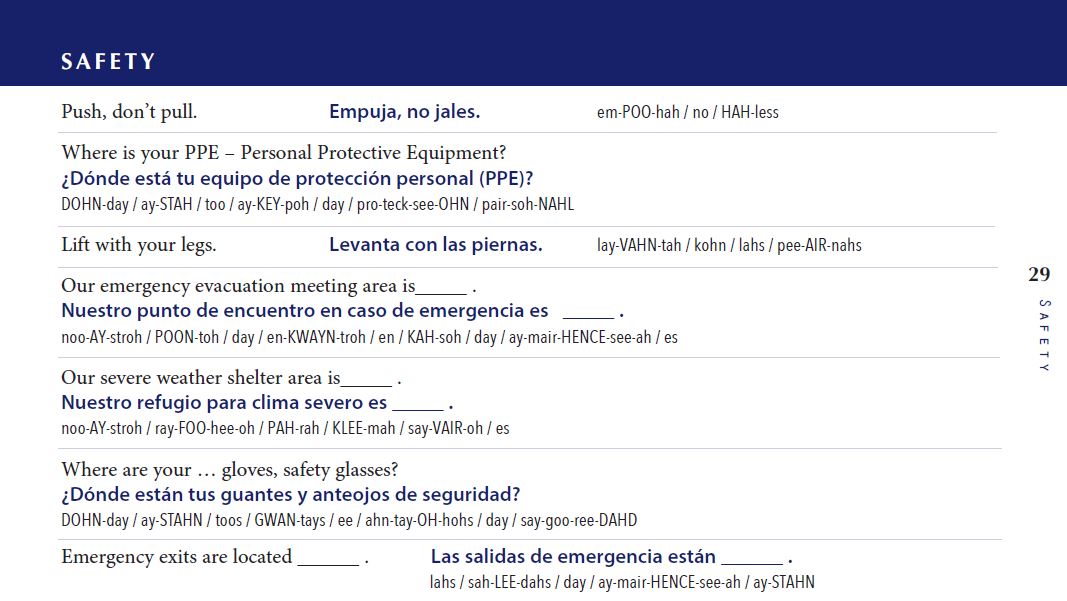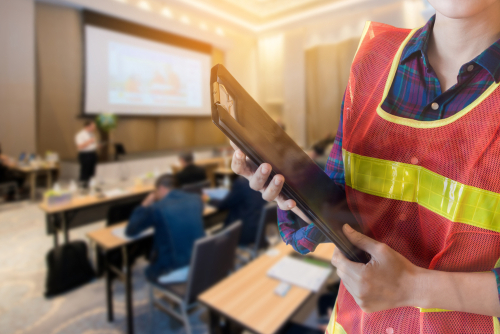In today’s global business environment, you more than likely have bilingual employees as part of your workplace team. While Spanish may be one the most common native languages of your bilingual employees, it’s by far the only one. Here at Workplace Languages, we are seeing an increased need for bilingual training in languages such as Chinese, Hmong, Punjabi, Somali, Gujarati, Korean, Vietnamese, and French. That’s why we offer custom bilingual training solutions in any language for any industry.
Why Create Custom Bilingual Training Solutions?
Custom bilingual training solutions can help you reach your language training goals. Every industry – and even every company within an industry – has their own “language” that has nothing to do with a person’s country of origin. Key phrases, branding messages, business jargon, and product terminology are unique to every business. When you create custom language solutions, you can close the language gaps on your team.
Quick Reference Guides Ease Bilingual Communication Challenges
To have effective communication on bilingual teams, it’s important for all employees to have quick access to commonly used words and phrases in multiple languages. Our pocket-sized KwikFix™ English and Spanish booklets provide easy reference for common workplace phrases. Customization of these booklets is beneficial for a variety of business-specific topics, including:
- Employee safety (see example on right)
- Hiring and scheduling
- Manufacturing processes
- Product descriptions
- Human resources benefits packages
- Life skills
- Conversational language
- Requests and directions
- Procedural guides
The Customization Process
Customizing bilingual training solutions is a complex process. The first step is to conduct an in-depth needs assessment that involves touring the client’s facility, creating surveys, and job shadowing. From there, a language specialist will work hand-in-hand with a company representative to review any needed documents to help gain a full understanding of bilingual training needs. After all information is gathered and questions are answered, creation of the language program or bilingual product can begin.




